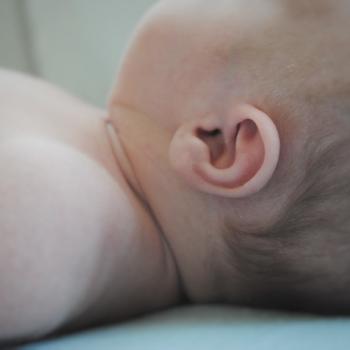The Coronavirus has been a shock to the system for local congregations. Many congregations have gone weeks, even months, without meeting in person. Instead they have relied on online broadcasts of their services to communicate. My church started online broadcasting of our services as soon as we had to shut down. On Easter Sunday, though, we made a shift. We started a drive-in service. We began worshipping without our sanctuary.
A sanctuary is only a building, but it communicates even as it uses no words. Even though it is unconscious, we ministers rely on the sanctuary to help communicate truth. Sanctuaries lend authority to the words we speak. The visual cues inside our sanctuaries are important, whether we realize it or not. When we made the decision to worship outside, I knew immediately that everything would be different. I was going to preach without my central pulpit. There would be no baptistry behind me. The large cross on the back wall of the baptistry would not be seen. Our magnificent pipe organ would not be played. The stained glass would not silently tell the Bible story. There would be no alter silently pointing to the need of repentance. There would be no communion table encouraging us to remember the sacrifice of the Lord and reminding us of His call to sacrifice. All of the visual cues I had become accustomed to using would not be available. It would be only me standing on a moveable stage, preaching over a loudspeaker, and hoping there would be no sound system feedback.
I also knew that what I could communicate would be an issue. In a controlled environment like a sanctuary, I could communicate a level of detail that would not be possible in a parking lot. In preparation for a typical sermon, I study the text deeply. I dig into the background and history. I consult Biblical scholars and theologians. I look at the text from as many angles as I can, to make sure I understand it well and to bring new light on familiar readings. This depth of study is very important, and I try to bring the knowledge gained by that depth of study to the pulpit every week. In a parking lot, the kind of depth I would normally bring is very difficult to communicate. People listening over loudspeakers in their cars would struggle to give attention to a detailed line of thought. So, I decided that I could only communicate simply, directly, and passionately. As my grammar teacher would say, compound-complex sentences were out of order.
I felt bare. The great tools I had used for years were suddenly not the right tools for the task. All of the things I had relied on were not only superfluous, they got in the way. The only tools I had were the Gospel and my passion for it. Fortunately, they were enough. They were more than enough.
The worship service itself had to be different. Singing all five verses of Amazing Grace s would absolutely not work. Choirs were impossible to assemble. There was no way to do a children’s sermon. So, The service had to be simple. The music had to be big, upbeat, and in a major key. We had to rely on soloists. The electronic piano could be used, but it would never have the power of the piano and organ duets we had in the sanctuary. There was no part of the worship service that could be the same.
With all of that change, one would have thought that our people would be ecstatic about going back into the sanctuary. Even though we could have gone back in weeks ago, the congregation is in no rush. When one compares what we would have to do to go back inside—social distancing, masks, vigilance about cleaning, absence of nursery, among many other challenges—to what we have in the parking lot, the parking lot is a much better option. Our congregation likes worshipping freely and comfortably in their cars. In truth, they also like me to be more vulnerable and open.
We will probably continue to host drive-in services for a few more weeks. It is my hope that when we do go back inside, it will feel like a celebration not like an experiment in disease prevention. I am also convinced that we go back inside, there is no way back to the way we did things before. Our comfortable patterns of worship are permanently altered, most likely.
I also hope that we will remember the lessons we have learned in the parking lot. We were reminded that the building is not the Church. We were the Church both with and without our sanctuary. I hope we will remember that getting back in our sanctuary is not the mission of the Church. Our mission exists with or without our sacred space. I hope we remember the fun we had meeting outside, the comradery we experienced setting up our parking lot. I hope we remember how much fun it was to honk our horns in appreciation of a solo or an excellent message. I hope we remember that worshipping God is to be the highlight of our week. I hope we look back at these days and thank God that we took a chance and tried something new.











